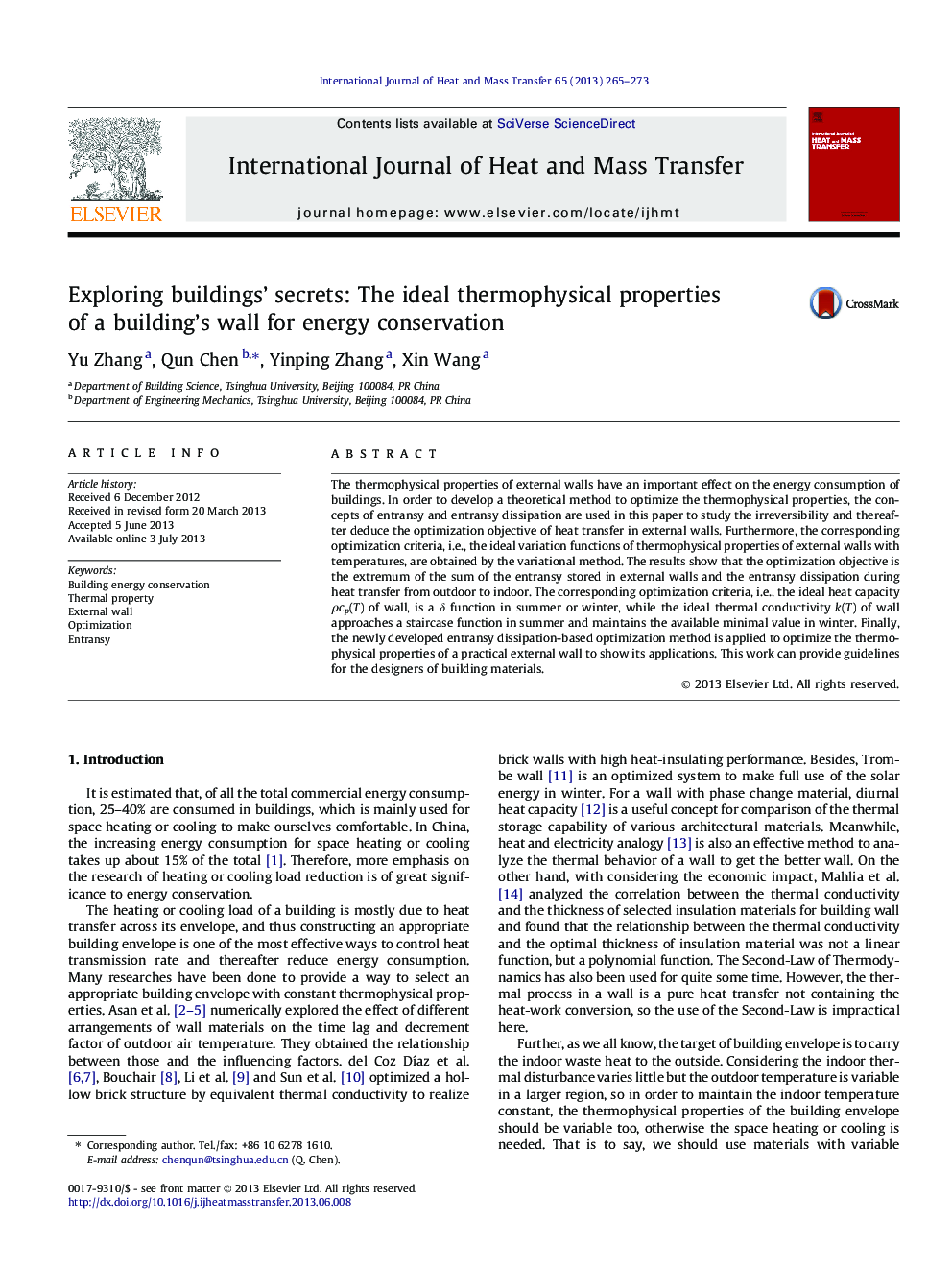| Article ID | Journal | Published Year | Pages | File Type |
|---|---|---|---|---|
| 7058470 | International Journal of Heat and Mass Transfer | 2013 | 9 Pages |
Abstract
The thermophysical properties of external walls have an important effect on the energy consumption of buildings. In order to develop a theoretical method to optimize the thermophysical properties, the concepts of entransy and entransy dissipation are used in this paper to study the irreversibility and thereafter deduce the optimization objective of heat transfer in external walls. Furthermore, the corresponding optimization criteria, i.e., the ideal variation functions of thermophysical properties of external walls with temperatures, are obtained by the variational method. The results show that the optimization objective is the extremum of the sum of the entransy stored in external walls and the entransy dissipation during heat transfer from outdoor to indoor. The corresponding optimization criteria, i.e., the ideal heat capacity Ïcp(T) of wall, is a δ function in summer or winter, while the ideal thermal conductivity k(T) of wall approaches a staircase function in summer and maintains the available minimal value in winter. Finally, the newly developed entransy dissipation-based optimization method is applied to optimize the thermophysical properties of a practical external wall to show its applications. This work can provide guidelines for the designers of building materials.
Related Topics
Physical Sciences and Engineering
Chemical Engineering
Fluid Flow and Transfer Processes
Authors
Yu Zhang, Qun Chen, Yinping Zhang, Xin Wang,
